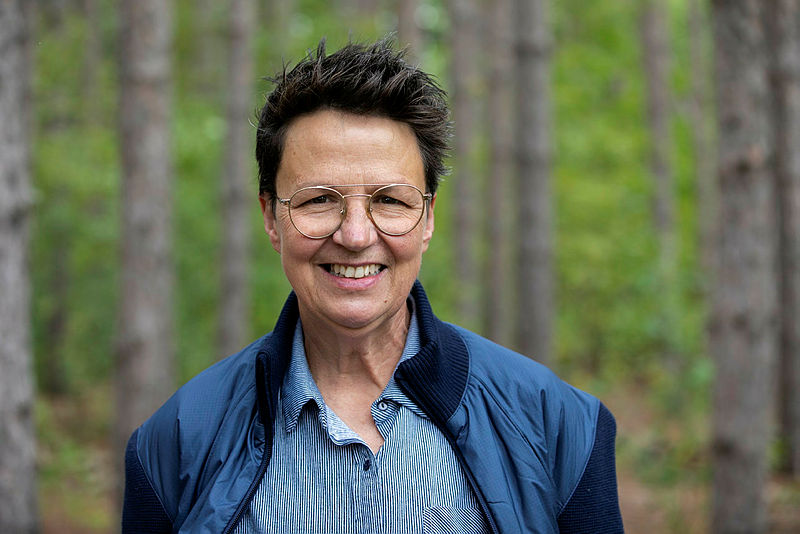Liberals need middle-class housing plan to match Conservatives, says housing expert

Housing Minister Nathaniel Erskine-Smith’s short time in his portfolio has shown a focus on non-market housing, which is a positive sign to some housing experts, although others argue more is still needed from the Liberals to address the homeownership woes of middle-class Canadians.
“I think [Erskine-Smith’s] communications are strong on the lower end of the housing market, but we’re really not seeing anything that helps the middle class, and we’re not seeing anything that helps them in particular,” said Mike Moffatt, founding director of the Place Centre at the Smart Prosperity Institute. “We haven’t heard anything about middle-class housing ownership, and that is a big issue that comes in the polling data—that young people have given up hope of ever owning a home, and nothing that we’re really hearing from Erskine-Smith is going to help them believe that anything’s going to meaningfully change for them.”
Erskine-Smith (Beaches–East York, Ont.), who assumed the role of minister of housing, infrastructure, and communities on Dec. 20, 2024, released a video on Jan. 20 discussing the housing crisis facing Canada, which he said is not felt the same way by everyone, “but it does affect us all.”
He acknowledged he is new in his role and is working “with a short runway,” but said he is focused on making the most of his time.
“First, it’s currently too hard and expensive to build the homes that we need. There’s too much red tape, too many different restrictive planning and zoning rules, and too many administrative delays. We need to remove all barriers to let the market build and require greater density everywhere, especially near transit and post-secondary institutions,” he said in the video. “Look, we are on the right track. We are. But we need the scale. That means doubling down on our financial commitments to non-profits and social housing across Canada. Lastly and related, we need to treat housing as a home first, and an investment second.”
The current average time needed for Canadians to save for a down payment on a home has more than tripled from the average of five years needed about 50 years ago, according to Erskine-Smith in the video.
To help address the housing crisis, Erskine-Smith mentioned measures implemented by the Liberal government, including the National Housing Strategy launched in 2017. Since the launch of the strategy, 296,622 housing units are under construction or have been repaired or built, according to a September 2024 progress report.
Moffatt, who has regularly been consulted by the governing Liberals on their housing strategy, told The Hill Times that Canada has two housing crises happening in parallel, with a big shortage of social housing and deeply affordable housing, but also a middle-class housing crisis with people being “priced out” of owning, or even renting, a home.
Although Erskine-Smith hasn’t had enough time in his current role to implement any significant policy changes, he’s “saying some good things, particularly around the need for more affordable housing,” according to Moffatt.

Moffatt said that he would like to see more of a plan from Erskine-Smith to address homeownership for the middle class. He said that the Conservatives have a plan to address middle-class homeownership through a pledge by Conservative Leader Pierre Poilievre (Carleton, Ont.) to scrap the federal sales tax on new homes sold for less than $1-million, but that the Liberals don’t have any comparable proposals.
“I’m not seeing anything from [Erskine-Smith] on restoring the dream of home ownership for young, middle-class people. And I think that’s a mistake,” said Moffatt. “I think it’s both an economic mistake, but I also think it’s a political mistake—that Poilievre has something for them in terms of eliminating the GST on homes under a million dollars, and the federal government has no response to that.”
In his video, Erskine-Smith mentioned other Liberal government measures intended to address the housing crisis, including a reduction in immigration levels. Immigration Minister Marc Miller (Ville-Marie–Le Sud-Ouest–Île-des-Soeurs, Que.) announced an immigration plan in October 2024 intended to stabilize population growth and relieve pressure on the housing market by limiting new permanent residents to 395,000 in 2025, with further cuts to 380,000 people in 2026, and 365,000 in 2027.
Steps taken by the Liberals on the housing front have also included eliminating the GST on the construction of new rental apartments in September 2023, and the launching of a new housing plan in April 2024, which included measures such as an Affordable Housing Fund.
Federal housing advocate Marie-Josée Houle told The Hill Times that Erskine-Smith has been emphasizing non-market housing—or rental or for-sale housing provided for low- and moderate-income groups not traditionally served by the private market—which she said is music to her ears.
On Jan. 26, the Liberal government announced more than $2.1-billion in contributions and low-cost repayable loans to build and repair 22,417 homes in Ontario.
“The market alone won’t deliver the housing affordability we need. These projects represent major progress in returning a strong federal role to affordable and non-market housing. It’s now time to double down on that commitment,” said Erskine-Smith in a Canada Mortgage and Housing Corporation (CMHC) press release.

“He’s publicly talked about the importance of non-market housing, about ending homelessness, and viewing housing as a home and not an investment. That’s a nice way of addressing the financialization, not just at the big corporate investment scale, but also on the individual scale; that housing is a critical need in the same way that health care is, and that our federal government has a huge role to play to make sure that we’re prioritizing and investing in it,” said Houle. “What I would really like to see is a minister use the words ‘human rights to housing.’ That’s what I really need to hear and not dance around it.”
Houle said the federal government’s Rapid Housing Initiative (RHI) is a big win when it comes to addressing housing. The third phase of the RHI, launched in 2022, is expected to create more than 5,200 new homes, of which almost half will be for women and one-third will be for Indigenous Peoples, according to a Jan. 26 CMHC press release.
“We’ve seen—especially in the last budget—more emphasis on non-market housing. We’ve seen the new minister talk about the importance of non-market housing, and we need that money to roll out as soon as possible. And some of it is. We won’t see the results of that, because it takes a while to reach the end of construction and for people to move in,” said Houle. “What we need is a long-term strategy to make those programs continue because we’re headed into a political change, and these programs have to outlive the political cycles, and then in the end we really need that all of the projects be based in human rights.”
Ricardo Tranjan, a political economist and senior researcher with the Canadian Centre for Policy Alternatives, told The Hill Times he doesn’t have any thoughts yet on Erskine-Smith in the role of housing minister, but he thought his predecessor Sean Fraser (Central Nova, N.S.) brought renewed energy to the role.

“Since the Liberals came to power in 2015, there has been some ebbs and flows in how much attention and energy this government put on housing. There’s a lot of energy around 2017 with the launching of the national housing strategy, the first sort of national plan of that kind on this file for quite some time,” Tranjan said. “Of course, things get a little bit weird around the pandemic and they focused on other stuff, and when Fraser comes into that role … I think he has been successful at advancing some policies that are focused on increasing supply, especially through the Housing Accelerator program, where the federal government worked with municipal governments to change some of the regulations in place.”
Tranjan said he disagrees with the assumption that housing affordability can be addressed by increasing the housing supply.
“We have to choose at some point whether we want housing to be the best investment in town, or be affordable to the large share of working families. A lot of our housing debates, and a lot of the housing policies that we have been putting in place in the past years [are] trying to square that circle. It has proven impossible to do.”
When asked how Erskine-Smith could improve upon addressing the housing crisis after taking over the ministerial role from Fraser, Tranjan said he should refocus funding away from incentives for private developers, and towards supporting non-market housing.
“My assessment is that we have a housing system that is largely focused on ensuring that the rental market, specifically, is profitable. There are a lot of laws and regulations in place to ensure that investors have access to high returns on their investments,” he said. “Refocus federal funding for housing. It should be for non-market housing that is not-for-profit and it’s actually affordable.”
Catherine McKenney, the executive director and co-founder of CitySHAPES, a non-profit organization focused on the broad issue of improving cities, told The Hill Times that they think Canada’s housing crisis has only worsened since the introduction of the 2017 national housing strategy, with “many more people in core housing need.” They described Erskine-Smith as having practical notions around housing, but noted that he’s likely to have a short term of a matter of weeks or months.
Parliament was prorogued on Jan. 6, and a spring federal election could follow if the Liberal government were to lose a confidence vote when the House returns on March 24. The new prime minister who will be selected when the Liberal leadership races wraps on March 9 could also choose to go to the polls in short order.

“[Erskine-Smith] does want to roll out the money to cities. From the Housing Accelerator Fund, he wants to get loans out to non-profits to be able to build. He recognizes that it can’t just be loans. It needs to be coupled with grants. That’s a positive,” said McKenney. “However, if this federal government could not make any progress in eight years, I’m not sure how they’re going to make any progress in eight weeks or a couple months.”
McKenney, a former Ottawa city councillor and mayoral candidate, was nominated by the Ontario NDP on Nov. 23, 2024, to represent the party in Ottawa-Centre in the next provincial election.
To better address the housing crisis at the national level, McKenney said the federal government needs a clear definition of affordability.
“Affordability can’t be based on median income or even based on average market rentals. Affordability has to be based on families or an individual’s ability to pay for housing,” they said.
In Canada, housing is considered “affordable” if it costs less than 30 per cent of a household’s before-tax income, according to the CMHC.
“To use that as the definition of affordability is absolutely key, and then to actually address that, to actually invest in deeply affordable housing,” McKenney said. “We really need to scale up, and ensure that affordable housing for people who need deeply affordable housing, even moderately affordable housing, is there for people.”
The Hill Times
Affordable housing statistics
- Previous research has shown that more than one in five Canadian households were living in unaffordable housing (i.e., they spend more than 30 per cent of their income on shelter costs) in 2022.
- Nearly half (45 per cent) of Canadians reported being very concerned about their ability to afford housing because of rising housing costs or rising rent.
- In addition, about one-third (35 per cent) of Canadians reported that their household had difficulty meeting their financial needs (i.e., transportation, housing, food) during the past 12 months. This percentage was slightly lower than that reported in the spring of 2024 (39 per cent).
- From Aug. 2 to Sept. 15, 2024, one-third (34 per cent) of Canadians also reported that at least one of their household members had experienced significant financial difficulty due to increases in housing costs.
- From Aug. 2 to Sept. 15, 2024, young adults in Canada (aged 20 to 35 years) were more likely than older adults (aged 36 years and older) to report experiencing the most common housing affordability challenges in the past year. Among this younger age group, 59 per cent reported being very concerned about their ability to afford housing, and half (51 per cent) had moving plans that were impacted by rising prices. By comparison, more than one-third (38 per cent) of older adults were very concerned about their ability to afford housing and one-quarter (25 per cent) had their moving plans impacted.
- Some Canadians reported experiencing discrimination when seeking or applying for housing. Specifically, two per cent of Canadians reported experiencing this form of discrimination in the past 12 months. Racialized Canadians (three per cent) were more likely to experience housing-related discrimination compared with non-racialized people (one per cent).
—Source: Housing challenges related to affordability, adequacy, condition and discrimination, August 2 to September 15, 2024, released on Nov. 19, 2024, by Statistics Canada
Homebuilding statistics
- Nationally, actual 2024 housing starts were up two per cent in centres of 10,000 population and greater, with 227,697 units recorded, compared to 223,513 in 2023.
- Combined with an estimated 17,423 actual rural housing starts, the total for all areas in Canada in 2024 was 245,120, also up two per cent compared to 2023. This increase is primarily explained by historically high rental construction levels, and overall increased starts in Alberta, Quebec, and the Atlantic provinces.
- Canada’s six largest Census Metropolitan Areas saw a combined three per cent year-over-year decrease from 2023, driven by lower starts levels in Vancouver, Toronto, and Ottawa where multi-unit starts fell due to weak pre-construction condominium sales. Calgary, Edmonton, and Montreal saw higher starts activity in 2024, particularly in the multi-unit segment, driven by high rental starts.
- The six-month trend in housing starts was flat (-0.7 per cent) in December at 242,637 units. The trend measure is a six-month moving average of the seasonally adjusted annual rate (SAAR) of total housing starts for all areas in Canada.
- The total monthly SAAR of housing starts for all areas in Canada decreased 13 per cent in December (231,468 units) compared to November (267,140 units).
- Canada’s centres with a population of 10,000 or greater saw 16,531 actual starts in December, pushing the 2024 total up to 227,697. This compares to 223,513 for the same period in 2023, a two per cent increase.
—Source: Housing starts up 2% in 2024 from 2023, released by the Canada Mortgage and Housing Corporation on Jan. 16, 2025.






 LICENSING
LICENSING PODCAST
PODCAST ALERTS
ALERTS













